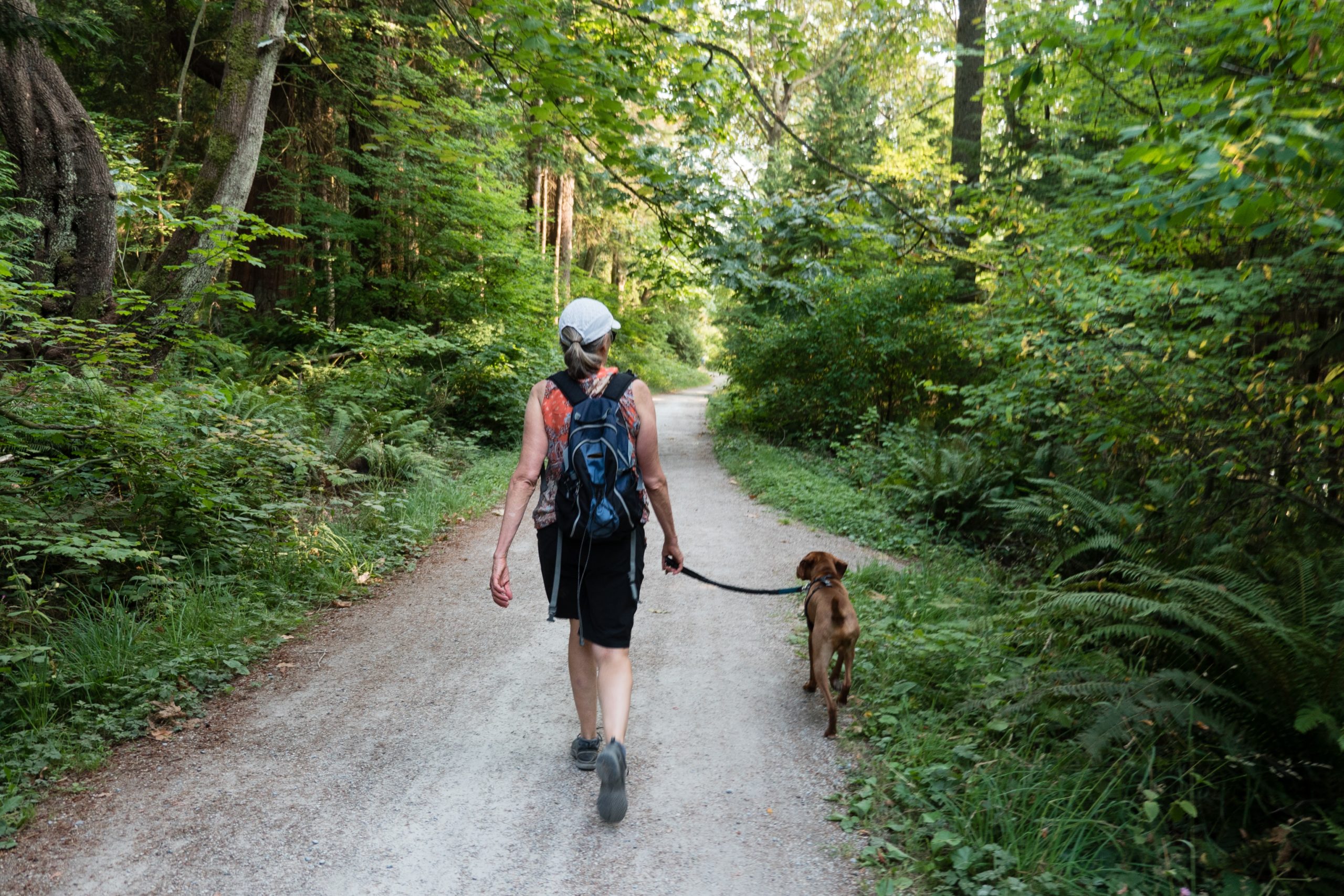
Likely Companions
Owning a dog can be a very rewarding experience. They can bring joy and companionship in many facets of life; this can be especially comforting during the pandemic. One of the joys of dog ownership is taking them for walks which is very beneficial for both the owner and dog. This blog will offer tips on dog walking injury prevention.
Dog Walking Injuries
All too often in the clinic we see a long list of injuries associated with walking a dog. Most of these injuries stem from the leash. Either getting it wrapped around body parts and pulled on or you get pulled over while holding onto the leash. This blog will review ways to reduce the risk of injury while still enjoying walking your dog.
Dog Walking Injury Prevention
Choosing the Right Leash or Harness
Leashing your dog while walking is very common. Selecting the best leash for you and your dog is a very important way to reduce the potential for injury. Stay away from leashes with thin rope or that have a tendency to knot up. These styles have a higher chance of getting wrapped around hands or fingers that can cause a whole host of injuries.
Qualities of Good Leash
- Wide diameter
- Does not knot very easily
- Highly visible
- Built in elasticity
If your dog has a tendency to pull hard, there are several options that will help reduce the risk of falling. Once you clip the leash on the collar, wrap the leash around the dog’s torso. Running the leash through the loop that’s produced will allow the tug to be felt in the dog’s torso rather than the collar. This helps to provide feedback to the dog to reduce pulling without choking them or the need for a choking collar. Using a leash that has built in elastic can increase safety for both dog and owner by reducing the tug on the owner.
Torso Harness
Some dog leash companies have a harness that the owner can wear around their torso. The torso anchor system can offer several advantages over the traditional leashing system. The torso anchor changes the center of gravity where the dog is pulling, from high on the shoulder to the middle of the body. With the center of pull lowered on the body there is more mass to pull over. This allows for better balance since your body’s typical center of gravity is at about the belt buckle. Some torso style of anchors also have a quick release system. This increases your safety if your dog continues to pull, or you feel unsafe being permanently attached to your dog.
Mind Your Footwear
The type of footwear you choose to walk your dog in is very important, especially if you have a large breed dog or your dog has a tendency to pull while walking. Alaska can provide a wide variety of weather from rain, snow, and ice. Choosing the correct footwear is very important to help maintain safety while walking with your dog. Several brands of shoe companies now make shoes with metal studs embedded in the souls of the shoe. The extra traction of the studs can help to provide a reduced fall risk during the winter months. There are also wide of ice cleats available on the market. Ice cleats are a great way to increase traction and can be attached to most shoes.
Training
Initial training for your dog is an important aspect of dog walking injury prevention. Setting behavior expectations for when your dog is on a leash is very important. Sometimes this is better accomplished with help. This can include an obedience class or hiring a private dog trainer for a few sessions to help set those behavior expectations. Remember that when working with an animal, the best way to get good results from your dog is consistency with the routine. Commands that you use and positive reinforcement are also great ways to help train your dog.

As a Last Resort…
The last way to help reduce the risk of injury while walking your dog is simply to let the leash go if they pull too hard. You can then work on retrieving your dog at a later time. It might be inconvenient at the time to have your dog on the loose, but in most cases it will be less effort and energy than sustaining an injury to your arm.
I hope this blog on dog walking injury prevention has been helpful to all our patients and future patients with dogs. If you find yourself with an injury to your shoulder, arm or hand, please call us at (907)563-8318. We will help you get the care you need!
Written By: Tom Robinson, OTD, OTR/L


